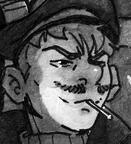ARTHUR'S CARRD
silly little card | silly little man :)

A Little Bit Of Info
kinnie zone




bio
hello! i'm arthur, and i do art n stuff. if you wanna ask anything but don't want to dm/reply, feel free to drop something in my tumblr inbox or retrospring (linked on home page)right now im pretty into witch hat atelier, mp100 dungeon meshi and the great mouse detective, on the art side of things, but i also talk about animal crossing, spreadsheets, hades game and other miscellaneous stuffthough i try and keep things UK Rated 15 (if you're not sure what this means, please google our film rating system) at most to terms of what i post, i may be following accounts that occasionally post suggestive content or horror/upsetting content that could appear on your dash for Algorithm Reasons which I cannot control - so follow with caution pleasei am too tired and too in my mid-twenties to Discourse with strangers about ships - so please just DNI if you're proship and/or if you ship or condone adult/minor shipping. not up for debate. in turn - if i'm following/sharing something from someone who turns out to be proship please drop me a DM or ask because i would rather not be doing that. it's very much appreciated.
Marker reviews
Marker recommendations
These are markers I would recommend based on my own taste and experience - I've described their characteristics as best I can below.
Ohuhu brush & fine markers - my go-to recommendation for anyone looking to get into markers or expand their collection. High quality, massive colour range, and low-cost sets. I would recommend brush over fine nibs as a matter of personal preference, and for the detail that can be performed with the thinner brush-tip - however the colour range does not entirely overlap and there are more available in fine nibs. I personally prefer the ink-flow to Copics (which are drier and require more care when laying down a flat colour) and they blend very well, although the very-light colour range is currently limited and the lack of refills/limited single-marker options is currently an issue. My own plan is to find colour matches for my most-used markers in Copics as they run out if I am unable to replace like-for-like.
Copic sketch/ciao (brush nibs) - Copics are typically lauded as the holy grail of alcohol markers, and not without reason. The colour range is fantastic and the refillable barrels do mean slightly less waste and markers that get cheaper with time. The two biggest barriers are, of course, the incredibly high cost per marker and - as a matter of personal taste - the relative dryness/low ink transfer of the brush nibs. This does result in a more controlled ink flow, but they may be harder to handle for a beginners looking for even coverage. I've also had difficulty in the past with refilled pens never truly working the same way - even with the nibs in good condition and trying various refill techniques. As I've been gifted a lot of my Copics second-hand and have not refilled my own purchases yet, I cannot speak for whether this is typical or a case of older markers drying out internally and affecting their ability to absorb new ink - I'll update this in future, as I've not seen this complaint elsewhere. That being said I would not recommend Copics as a first marker brand - they are best used as high-quality replacements for colours you use a lot, or for niche colours that aren't covered in other ranges. Also as a point of interest - Copics are about half the price in their country of origin, Japan, so if you're looking to buy a lot and you have any way of getting them directly that may be worth it.Other markers
Here are some other brands I have tried - some I have a good opinion of but haven't much experience with, others I strongly advise against buying
Windsor & Newton (fine/bullet tip) - these were the first markers I ever tried, and I have very mixed opinions of them. Colour-range wise, Windsor & Newton have a reasonable selection that can be ordered in packs and individually - notably their skintone packs provide much more muted tones wrt saturation - which may suit some styles better - but are very, very poor for dark skin options (although colours outside of these packs may be suitable). For bullet nips, they lay down a flat-colour well with minimal streaks and sit between Ohuhu and Copics on a dryness scale. Unfortunately, I have a lot of issues with them too. For brand-specific issues the biggest for me has been pen quality, pen design, and colour-code consistency. I've had multiple pens "explode" which results in a permanently high ink-flow resulting in dripping nibs, which I've not experienced with other brands. The pen barrels are sizeable and capped at one end with a tapered nib - this is good for tactile identification of the nib at each end, but terrible for pulling the right pen out of storage, as the code is only on one end of the pen. Additionally there are two graphic designs for the barrel itself - one that has a colour streak along the length that contains the name and code, the other with the colour streak in a ring with the code and name written at random alongside it. The former is much easier for code-location when the pen-ends are not visible. There also appears to be an issue of colour inconsistency between these two designs - it is not universal, but I immediately stopped buying W&N when I replaced a highly used colour with a pen of the same colour code only to find the shade was ENORMOUSLY different. This one issue alone rights-off the whole brand for me recommendation wise - all the positives can be found in other brands, including Ohuhu, for a significantly lower price and/or avoiding the negatives.
Marker tips and tricks
As with any art supply, markers take a fair bit of practice to get a rangle on. However, having some tips to start off with can help break through the fear of getting things wrong or give you a good place to trouble-shoot or create your own techniques/workflow from!
As a note: the efficacy of these techniques may vary with the materials you're using - marker brands and paper types both change behaviour massively.
ABSOLUTE MUST-KNOWSThough techniques vary, there's a number of things that will be true regardless of your style and materials
1) Under no circumstances should alcohol markers be used with high-absorbency paper such as watercolour paper. Alcohol markers are, as the name suggests, full of alcohol - which is the solvent that carries the colour in the pen and evaporates as it dries. If using a paper that is design to absorb high volumes of solvent - so, water in the case of watercolour - the alcohol will be absorbed at very high speeds which can affect the colour of your marker as well as rapidly drying out the nib. If you're struggling with bleed-through or solvent saturation on your paper, you may need to find an alternative with a higher gsm or coatings that prevent bleedthrough - but watercolour paper should be avoided.
2) The ability to blend and reactivate colours depends heavily on how long the ink has spent drying. The alcohol used in alcohol markers evaporates rapidly at room temperature, drying the ink on your work fairly quickly. There's a decent window where the ink will remain wet enough to blend, blur or even "lift" - but this window does close within a few minutes (or even less for low-transfer brands) if you're looking for perfect gradients.
3) Wet inks in proximity may blur/bleed where they meet or are layered. This is dependent on drying time (as above) and paper quality - but it's something to be aware of if you want a crisp edge.
4) Layering the same colour over a dry layer can darken the colour. This can be used as an advantage, but it also can result in "waterstain" patterns if you're too slow colouring a flat colour in a large space. If you're looking to make a flat colour in a large area, start in a "corner" or enclosed area of the shape and keep working on the whole "front" of your colour without leaving any section for too long. Find areas that are isolated by the lineart and leave them untouched until you're finished with the more connected shapes, and prioritise parts of the front in key focus areas that won't have other colours layered over it later (e.g. if you're colouring in a face, making sure the nose is prioritised over the hairline).